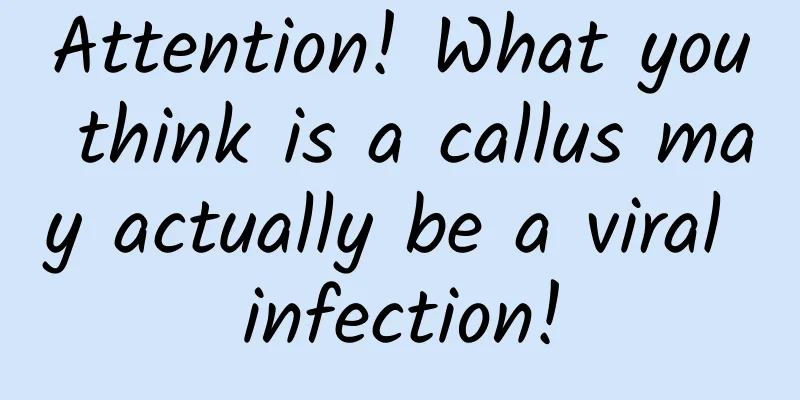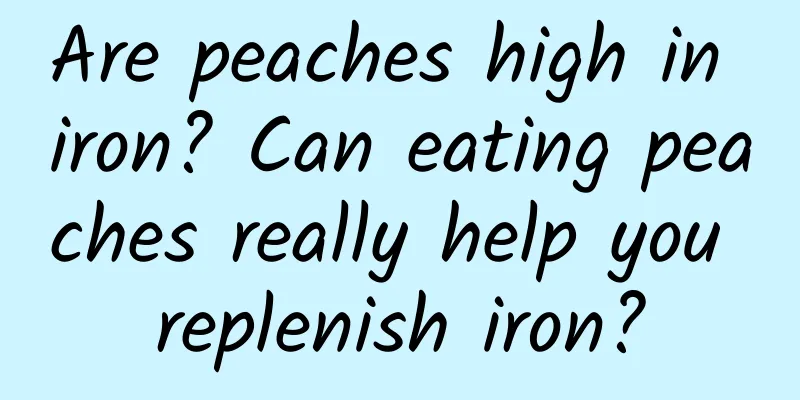Attention! What you think is a callus may actually be a viral infection!

|
You may have heard of calluses and corns, but do you know what styes, corns and warts mean? This article will talk to you about the differences and connections between these five skin surface diseases. 01 What is the difference between calluses and corns? I believe everyone is familiar with calluses, but corns may be a state of confusion. In fact, the causes of these two skin surface symptoms are very similar, but the results are completely different. The following is a detailed explanation of calluses and corns. Initially, calluses and corns are caused by a certain area of skin being squeezed and rubbed for a long time, which causes the stratum corneum of the skin to thicken locally. Although the cause is the same, the subsequent development of calluses and corns is completely different. Calluses Image: Wikimedia Commons Creative picture of cornworm Calluses are usually thick in the middle, thin at the edges, and have a large area. The thickened stratum corneum is also relatively uniform. In theory, calluses can grow on any part of the body, but they are more common on the palms and soles because these parts are often squeezed and rubbed. Corns, as the name suggests, are named because they look like chicken eyes. They often occur on the soles of the feet, backs of the hands, and fingertips. When the stratum corneum thickens, it will penetrate deep into the skin. Because the stratum corneum is hard, it is often accompanied by pain, and in severe cases it can even affect daily life. The difference between calluses and corns: Reference article (modified) Calluses usually do not have obvious physical symptoms, but if the friction is very strong, it will cause a certain degree of irritation, mild pain and burning sensation on the skin. On the other hand, corns are mostly accompanied by pain because the keratin growths penetrate deep into the dermis, especially corns on the soles of the feet, which often cause pain when walking due to the inevitable friction. How to treat calluses and corns? Although calluses do not cause pain, you should not be careless when removing them. Usually, people choose to soften the thickened stratum corneum by soaking it, and then remove it with a pumice stone. However, this is not a universal method for dealing with calluses. When using a knife or pumice stone to cut the stratum corneum, it may damage the dermis of the skin and cause unnecessary infection. Therefore, the following callus removal methods are recommended. (1) Pay attention to your daily body care and take a hot bath regularly to promote blood circulation, which can soften calluses to a certain extent; (2) For the thick stratum corneum that has already formed, do not expect to remove it all at once, but use a foot scrubber to remove a small amount every day after the calluses soften. This can reduce the risk of damaging the dermis, prevent the calluses from continuing to thicken, and slowly remove the accumulated stratum corneum. Corns are more difficult to remove than calluses because they have already damaged the dermis. The extent to which corns penetrate the dermis varies from patient to patient. Generally speaking, the following methods are recommended: (1) Go to a specialized dermatologist, listen to the doctor's advice, and clearly judge the progress of the corns on your feet; (2) In mild cases, corns can be treated by applying corn ointment and taking corresponding prescription medications. In severe cases, corns can be removed surgically. (3) Corns are caused by long-term and chronic friction. Therefore, in order to prevent corns on the soles of the feet, you should pay special attention to choosing a pair of suitable shoes to minimize unnecessary friction. At the same time, just like removing calluses, you should soak your feet in warm water and remove the stratum corneum on your feet regularly. 02 What are warts? Next, I will introduce you to warts, a skin disease. In fact, warts look very similar to corns, but the causes are completely different. Warts often occur on the soles of the feet and fingers, and are often caused by infection with the human papillomavirus. Warts and corns are very similar in appearance, but if you look closely at the surface of warts, you can sometimes find some tiny black spots, while corns do not have these black spots. At the same time, in terms of quantity, warts rarely appear alone, and often many appear at the same time. Corns basically appear in the same area, with a maximum of 2 to 3, and basically no more than 5. Therefore, if you find a lot of white bubbles in an area on your feet, and the number is increasing, then you are more likely to have warts. Wart image: Wikimedia Commons In terms of development level, there are the following differences between the two: (1) Corns are not caused by viruses and are not contagious, but warts are contagious. Therefore, if you find white blisters on your feet and they do not get better after applying corn ointment, but instead increase in number, then it is very likely that the warts are caused by a viral infection. (2) The two diseases grow at different speeds. Corns grow more slowly, generally taking several months to form, while warts generally form in less than half a month. How are warts treated? The main recommended treatments for warts are: (1) First of all, like corns, the treatment of warts requires reducing friction, such as changing to a pair of shoes that fit the feet well. (2) Because warts are contagious, once warts are diagnosed, you should be careful to avoid infection. For example, avoid using bathtubs, towels, shoes and other items that come into contact with warts on the skin at the same time as others to prevent infection to others. (3) See a doctor as soon as possible. Choose different treatment methods according to the type of wart. Do not just apply corn ointment and expect it to heal on its own like corns. Common treatment methods include medication, injection, topical medication, and surgery. Depending on the extent of the wart and the location of the wart, go to the hospital in time, listen to the doctor's reasonable advice, and choose the appropriate treatment method. 03 What kind of thorn is a cornucopia? A hangnail is a strip of torn and prolapsed epidermal skin on the left or right side of the nail fold or the proximal nail fold of a fingernail or toenail. A hangnail is also often called a periungual hangnail or ingrown nail. Picture of flesh thorn: made by the author The stratum corneum, the outermost layer of the skin, protects the inner skin. If this layer of stratum corneum lacks the right amount of moisture and loses its softness and lubricity, it will dry out and crack. There are two main causes of corns: internal and external. Internal causes are related to one's constitution. If one suffers from skin inflammation, or has dry skin, or sweats easily on the hands and feet, then one is more likely to lose water than the average person. External causes include excessive use of soap and other alkaline substances or organic solvents, friction, minor trauma, and long-term exposure to a dry atmosphere, which can easily lead to corns. How to treat corn spurs? Of course, the symptoms of corn thorns are generally not serious. Everyone has encountered corn thorns to some extent. Basically, the main method is to apply ointment and reduce inflammation. At the same time, be careful not to forcibly pull out the corn thorn, which is likely to injure the skin at the root and cause secondary damage. If the corn thorn has grown very long, you can choose to cut off the tip and leave the root to avoid hurting other skin and reduce the strange feeling of the fingers. 04 What kind of “eye” is a pinhole? Finally, let me explain what stye is. Stye is also called sty, which mainly occurs on the eyelids, where a tiny swelling occurs, accompanied by pain. The main symptom of stye is that a small area on the eyelid becomes congested, with white matter inside, making the eyelid feel strange, accompanied by swelling and pain. How to treat stye? The cause of stye is mostly due to infection with Staphylococcus aureus, especially when people have low immunity, they are more likely to suffer from this symptom. The common treatment method is to go to a professional ophthalmologist and get some eye drops or oral medication to relieve the symptoms. Of course, when the symptoms are severe, the doctor may need to cut open the abscess and then perform corresponding disinfection treatment to reduce the patient's swelling and pain. Eye of the needle (Image: Wikimedia Commons) The above article introduces 5 common skin surface symptoms. I believe you have discovered that although their names are similar, their pathologies and symptoms are different. Corns, calluses and warts are similar in appearance, while thorns and stye are completely different symptoms. Of course, in terms of severity, warts are the most serious, followed by corns and stye, then thorns, and finally calluses. However, after understanding these five skin surface symptoms, everyone will find that the prevention method is actually very simple. Wear suitable shoes and clothes, minimize abnormal friction on the skin, and ensure that the skin is well hydrated. At the same time, relieve stress, ensure that the immune system is in a normal state, and do not allow any germs to take advantage of the opportunity, so that these 5 common skin surface symptoms can be effectively prevented. Author | Li Zhuosi The article is produced by Science Popularization China, written by Li Zhuosi, and supervised by China Science Popularization Expo. Please indicate the source for reprinting The pictures in this article are from the copyright gallery and are not authorized for reproduction. |
Recommend
Strategies for creating highly active live streaming rooms!
In the past two years, live streaming has been ve...
Photoshop Art Title Design Course
Photoshop Art Title Design Course Resource Introd...
Touching China丨He leads the country's electric vehicles to gallop and overtake on the new energy track!
Twenty-one years later, our original intention ha...
Makeup tips for beginners
Introduction to makeup skills resources suitable ...
The most comprehensive and in-depth Zhihu traffic marketing encyclopedia
Did you know: What kind of brands are suitable fo...
Tips and strategies for becoming a “super user”!
The free feast on the Internet is becoming a thin...
@Newton: I never thought that my dog could also discover anti-physical phenomena!
Written by: Zhu Hengheng Editor: Wang Haha Layout...
Four channels and strategies for traffic acquisition
In the Internet age, whether it is e-commerce or ...
The colors of fruits are not just for the eyes! Please "see the colors" →
Fruits are not only sweet, but also contain a var...
Alipay’s loneliest days: major institutions have opened WeChat payment through UnionPay
April 1 is the first day of the implementation of...
"Xuelong 2" sets off! China's 13th Arctic Ocean expedition team sets out
On July 12, the 13th Chinese Arctic Ocean scienti...
My experience using Redmi Note these days
1. Appearance At first glance, it looks high-end a...
What is the upper limit of human height?
From ancient times to the present, height has alw...
Why is juniper pollen so popular? The scientific truth behind the "smoking" of the top streamers
This spring, juniper pollen has become a "to...









